NURS 6051/5051 TN006 Policy Regulation Fact Sheet Assignment Example
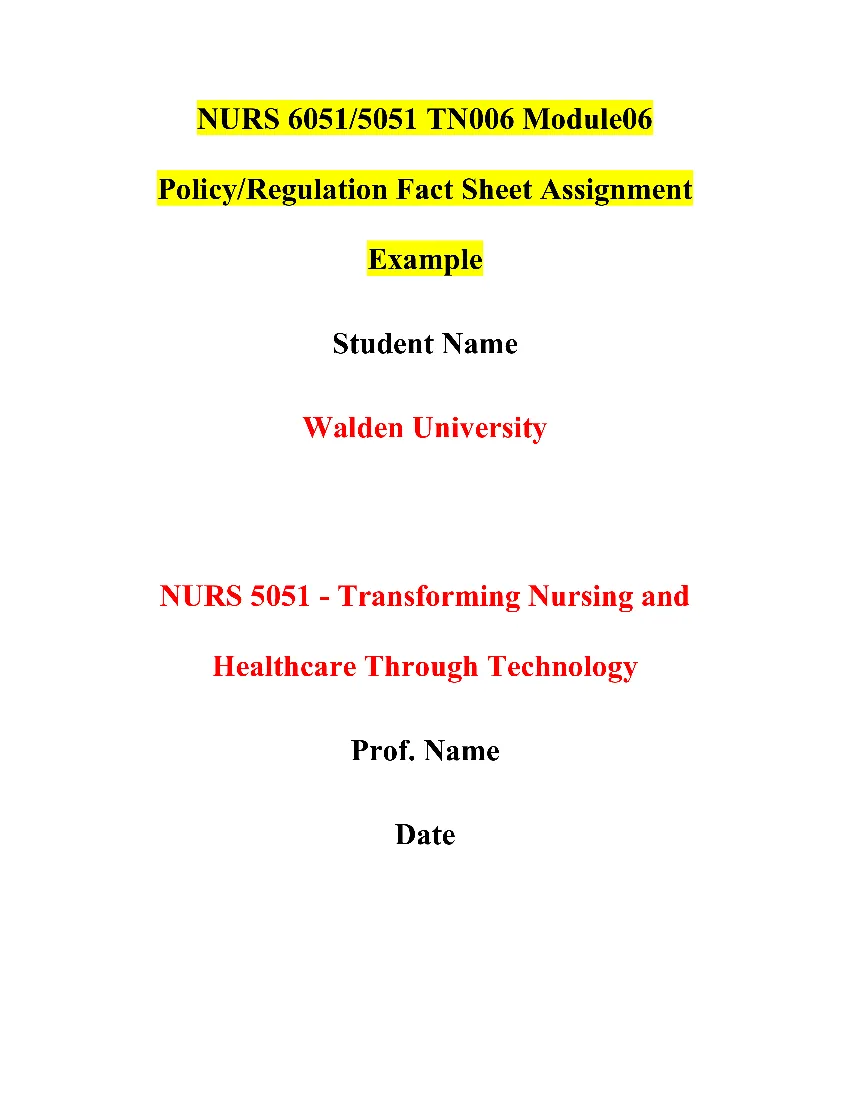 NURS 6051/5051 TN006 Module06 Policy/Regulation Fact Sheet Assignment
NURS 6051/5051 TN006 Module06 Policy/Regulation Fact Sheet Assignment
NURS 6051/5051 TN006 Policy Regulation Fact Sheet Assignment Brief
Course: NURS 5051 – Transforming Nursing and Healthcare Through Technology
Assignment Title: NURS 6051/5051 TN006 Module06 Policy/Regulation Fact Sheet Assignment
Assignment Objectives
- Evaluate a recent healthcare policy or regulation related to nursing informatics.
- Analyze the impact of the selected policy or regulation on healthcare system implementation.
- Assess how the policy or regulation affects clinical care, patient/provider interactions, and workflow.
- Identify organizational policies and procedures designed to address the implications of the selected policy or regulation.
Student’s Role
As a professional nurse, you are expected to apply your expertise in understanding and communicating healthcare policies and regulations. This assignment requires you to analyze and interpret the impact of a specific nursing informatics-related policy or regulation within a healthcare setting.
Competencies Measured
This assignment assesses your ability to:
- Evaluate legislative policies and regulations in the context of health and nursing informatics.
- Analyze the influence of policies and regulations on healthcare system operations and patient care delivery.
- Demonstrate knowledge of organizational policies and procedures aimed at compliance with healthcare regulations and standards.
You Can Also Check Other Related Assessments for the NURS 5051 – Transforming Nursing and Healthcare Through Technology Course:
NURS 6051/5051 TN001 Module01 The Nurse Leader as Knowledge Worker Assignment Example
NURS 6051/5051 TN003 Module03 Big Data Risks and Rewards Discussion Assignment Example
NURS 6051/5051 TN006 Policy Regulation Fact Sheet Assignment Example
Policy/Regulation Overview
The Medicare Access and CHIP Reauthorization Act (MACRA), enacted in 2015, represents a significant milestone in healthcare reimbursement, aiming to transition from traditional volume-based payment models to value-based care approaches. This legislation, replacing the Sustainable Growth Rate (SGR) formula, introduced two key payment tracks: the Merit-Based Incentive Payment System (MIPS) and Alternative Payment Models (APMs). MIPS amalgamates multiple prior quality programs—Physician Quality Reporting System, Value-Based Payment Modifier, and Medicare Electronic Health Record Incentive Program—into a comprehensive framework assessing performance based on quality, resource utilization, clinical practice enhancements, and meaningful use of certified electronic health record (EHR) technology (Centers for Medicare & Medicaid Services [CMS], n.d.; HealthIT.gov, 2018a). MACRA’s enactment signifies a paradigm shift towards incentivizing healthcare providers for delivering superior care outcomes and embracing value-based practices (American Association of Nurse Practitioners, 2018).
Impact on System Implementation
The implementation of MACRA has necessitated significant investments in advanced health information technology (HIT) infrastructure within healthcare systems. This includes upgrading or adopting electronic health record (EHR) systems capable of capturing and reporting the quality measures required for MIPS participation. These systems incorporate clinical decision support tools that prompt providers to adhere to evidence-based guidelines and track patient outcomes effectively (Centers for Medicare & Medicaid Services [CMS], n.d.; HealthIT.gov, 2018a).
In addition to upgrading EHR systems, successful MACRA implementation requires the integration of population health management tools into HIT systems. These tools enable healthcare organizations to monitor and manage patient populations more effectively, which is essential for meeting MACRA’s objectives of improving care quality and outcomes (McGonigle & Mastrian, 2017). This comprehensive approach to HIT infrastructure enhancement is crucial for healthcare systems to adapt to the shifting landscape of value-based care incentivized by MACRA.
Impact on Clinical Care, Patient/Provider Interactions, and Workflow
The enactment of MACRA has significantly influenced clinical care delivery, patient-provider interactions, and workflow within healthcare settings. With a heightened emphasis on value-based care and quality improvement, healthcare providers are incentivized under MACRA to prioritize preventive services and enhance care coordination (CMS, n.d.). This shift towards value-based care has reshaped patient interactions, making them more data-driven and focused on achieving improved health outcomes (HealthIT.gov, 2018b).
Healthcare providers now leverage technology, such as electronic health record (EHR) systems and patient portals, to engage patients in shared decision-making and monitor health outcomes over time. For instance, patient portals enable patients to access their health information, communicate with providers, and actively participate in their care, promoting patient engagement and empowerment (Centers for Medicare & Medicaid Services [CMS], n.d.).
Additionally, workflow redesign has become imperative to meet MACRA requirements effectively. Healthcare teams are now collaborating more closely to optimize patient outcomes and ensure compliance with quality reporting measures outlined by MACRA (McGonigle & Mastrian, 2017). This collaborative approach emphasizes the integration of technology and evidence-based practices to achieve the goals of value-based care and quality improvement mandated by MACRA.
Organizational Policies and Procedures
To effectively address the requirements of MACRA, healthcare organizations have implemented a comprehensive set of policies and procedures aimed at optimizing compliance and improving patient care outcomes.
Firstly, organizations have invested in advanced Health Information Technology (HIT) systems, including Electronic Health Records (EHRs) with integrated clinical decision support, to facilitate accurate and timely reporting of quality measures essential for MIPS participation (HealthIT.gov, 2018a). This infrastructure upgrade ensures that providers have the necessary tools to document and report quality measures effectively.
Continuous education and training programs are conducted to equip providers with the knowledge and skills required to navigate MACRA guidelines successfully (American Association of Nurse Practitioners, 2018). These educational sessions ensure that providers understand their roles in achieving performance goals under MACRA and remain updated on best practices in quality reporting and care delivery.
Healthcare organizations have established care coordination initiatives leveraging HIT tools to enhance communication and collaboration among providers, ultimately leading to improved patient outcomes (McGonigle & Mastrian, 2017). By implementing care coordination programs aligned with MACRA’s emphasis on coordinated care, organizations optimize resource utilization and patient care delivery.
Regular performance monitoring and feedback mechanisms are employed to track progress towards MACRA goals and identify areas for improvement using data analytics (CMS, n.d.). This continuous monitoring enables organizations to make data-driven decisions, enhancing quality reporting and care delivery processes.
Furthermore, healthcare organizations promote patient engagement through various strategies, including patient portals, telehealth services, and shared decision-making tools (HealthIT.gov, 2018b). These initiatives empower patients to actively participate in their care, improving patient-provider communication and overall care quality.
Lastly, dedicated compliance officers oversee MACRA compliance within organizations, conducting regular audits to identify and address compliance gaps and ensure adherence to regulatory requirements (CMS, n.d.). This proactive approach to compliance management minimizes risks associated with non-compliance and reinforces organizational commitment to meeting MACRA standards.
Conclusion
In conclusion, MACRA has driven significant transformations in healthcare policy and practice, emphasizing value-based care approaches and necessitating organizational adaptations to optimize compliance and enhance patient care outcomes. The successful implementation of MACRA requires a coordinated effort involving HIT infrastructure enhancements, provider education, care coordination initiatives, patient engagement strategies, and rigorous compliance oversight. By embracing these changes, healthcare organizations can effectively navigate the evolving landscape of value-based reimbursement and deliver higher-quality care to patients.
References
American Association of Nurse Practitioners. (2018). MACRA/MIPS: The transition from fee-for-service to quality-based reimbursement. Retrieved from https://www.aanp.org/legislation-regulation/federal-legislation/macra-s-quality-payment-program
Centers for Medicare & Medicaid Services [CMS]. (n.d.). MACRA. Retrieved from https://www.cms.gov/medicare/quality-initiatives-patient-assessment-instruments/value-based-programs/macra-mips-and-apms/macra-mips-and-apms.html
HealthIT.gov. (2018a). Health IT legislation. Retrieved from https://www.healthit.gov/topic/laws-regulation-and-policy/health-it-legislation
HealthIT.gov. (2018b). Meaningful use and MACRA. Retrieved from https://www.healthit.gov/topic/meaningful-use-and-macra/meaningful-use-and-macra
McGonigle, D., & Mastrian, K. G. (2017). Nursing informatics and the foundation of knowledge (4th ed.). Burlington, MA: Jones & Bartlett Learning.
Detailed Assessment Instructions for the NURS 6051/5051 TN006 Policy Regulation Fact Sheet Assignment
Assignment: Policy/Regulation Fact Sheet
As a professional nurse, you are expected to apply your expertise to patient care. On occasion, you will also be expected to share that expertise.
With evolving technology and continuous changes to regulations designed to keep up these changes, there is usually a need to share information and expertise to inform colleagues, leadership, patients, and other stakeholders.
In this Assignment, you will study a recent nursing informatics-related healthcare policy, and you will share the relevant details via a fact sheet designed to inform and educate.
To Prepare:
- Review the Resources on healthcare policy and regulatory/legislative topics related to health and nursing informatics.
- Consider the role of the nurse informaticist in relation to a healthcare organization’s compliance with various policies and regulations, such as the Medicare Access and CHIP Reauthorization Act (MACRA).
- Research and select one health or nursing informatics policy (within the past 5 years) or regulation for further study.
The Assignment: (1 page)
Create a 1-page fact sheet that your healthcare organization could hypothetically use to explain the health or nursing informatics policy/regulation you selected. Your fact sheet should address the following:
- Briefly and generally explain the policy or regulation you selected.
- Address the impact of the policy or regulation you selected on system implementation.
- Address the impact of the policy or regulation you selected on clinical care, patient/provider interactions, and workflow.
- Highlight organizational policies and procedures that are/will be in place at your healthcare organization to address the policy or regulation you selected. Be specific.
By Day 5 of Week 11
Submit your completed Policy/Regulation Fact Sheet.
Submission and Grading Information
To submit your completed Assignment for review and grading, do the following:
- Please save your Assignment using the naming convention “WK11Assgn+last name+first initial.(extension)” as the name.
- Click the Week 11 Assignment Rubric to review the Grading Criteria for the Assignment.
- Click the Week 11 Assignment link. You will also be able to “View Rubric” for grading criteria from this area.
- Next, from the Attach File area, click on the Browse My Computer button. Find the document you saved as “WK11Assgn+last name+first initial.(extension)” and click Open.
- If applicable: From the Plagiarism Tools area, click the checkbox for I agree to submit my paper(s) to the Global Reference Database.
- Click on the Submit button to complete your submission.
Learning Resources
Required Readings
McGonigle, D., & Mastrian, K. G. (2017). Nursing informatics and the foundation of knowledge (4th ed.). Burlington, MA: Jones & Bartlett Learning.
- Chapter 8, “Legislative Aspects of Nursing Informatics: HITECH and HIPAA” (pp. 145–166)
American Association of Nurse Practitioners. (2018). MACRA/MIPS: The transition from fee-for-service to quality-based reimbursement. Retrieved from https://www.aanp.org/legislation-regulation/federal-legislation/macra-s-quality-payment-program
Centers for Medicare and Medicaid Services. (n.d.). MACRA. Retrieved January 18, 2019, from https://www.cms.gov/medicare/quality-initiatives-patient-assessment-instruments/value-based-programs/macra-mips-and-apms/macra-mips-and-apms.html
HealthIT.gov. (2018a). Health IT legislation. Retrieved from https://www.healthit.gov/topic/laws-regulation-and-policy/health-it-legislation
HealthIT.gov. (2018b). Meaningful use and MACRA. Retrieved from https://www.healthit.gov/topic/meaningful-use-and-macra/meaningful-use-and-macra
U.S. Department of Health and Human Services. (n.d.). Laws & regulations. Retrieved September 27, 2018, from https://www.hhs.gov/regulations/index.html
Required Media
Laureate Education (Producer). (2018). Health Informatics & Population Health Analytics: Privacy, Security, and Ethics [Video file]. Baltimore, MD: Author.
Unlock Your Academic Success with NursingCustomWriting.com – Your Trusted Partner in Nursing Papers!
Are you struggling with tough nursing essay topics? Does your NURS 6051/5051 assignment seem daunting? Look no further! At NursingCustomWriting.com, we’re your go-to nursing paper writing service. Our expert nursing essay writers are ready to craft a unique, customized nursing essay just for you.
Why choose us? Plagiarism is never an option when you have our skilled professionals at your service. We guarantee originality, ensuring your paper stands out and secures the grades you deserve.
Worried about costs? Our online nursing papers come at affordable prices tailored for college students. We believe in accessibility without breaking the bank.
When deadlines loom large, and instructions are specific, we’ve got you covered. Our team can tackle any complex nursing informatics topic, meet tight deadlines, and guide you on how to ace your nursing assignment.
Our nursing essay writing service is your one-stop solution. Whether you need nursing papers for sale, coursework writing help, or reliable nursing assignment assistance, we’re here for you.
At NursingCustomWriting.com, our writers create outstanding nursing essay papers from scratch, regardless of the topic, deadline, or instructions. Let us handle the hard work, so you can focus on what truly matters.
Don’t miss out on the opportunity to succeed. Choose NursingCustomWriting.com and make your academic journey smoother.


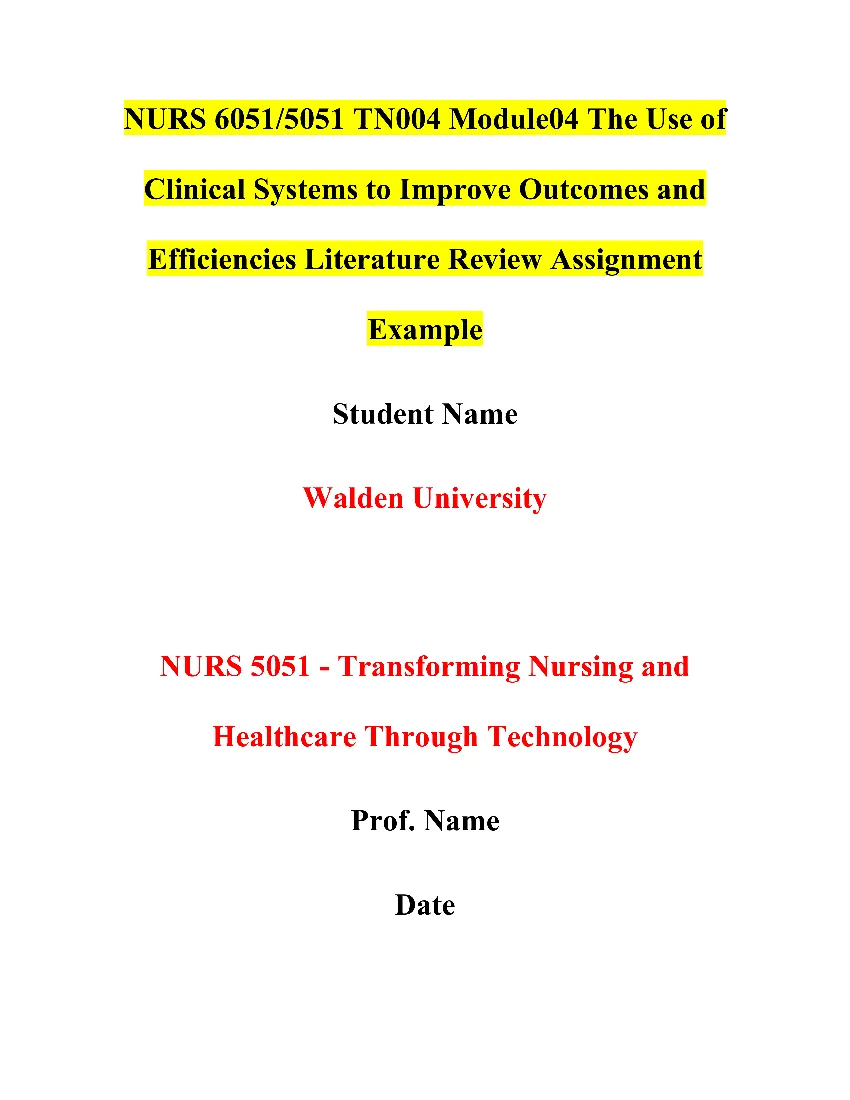 NURS 6051/5051 TN004 Module04 The Use of Clinical Systems to Improve Outcomes and Efficiencies Literature Review Assignment
NURS 6051/5051 TN004 Module04 The Use of Clinical Systems to Improve Outcomes and Efficiencies Literature Review Assignment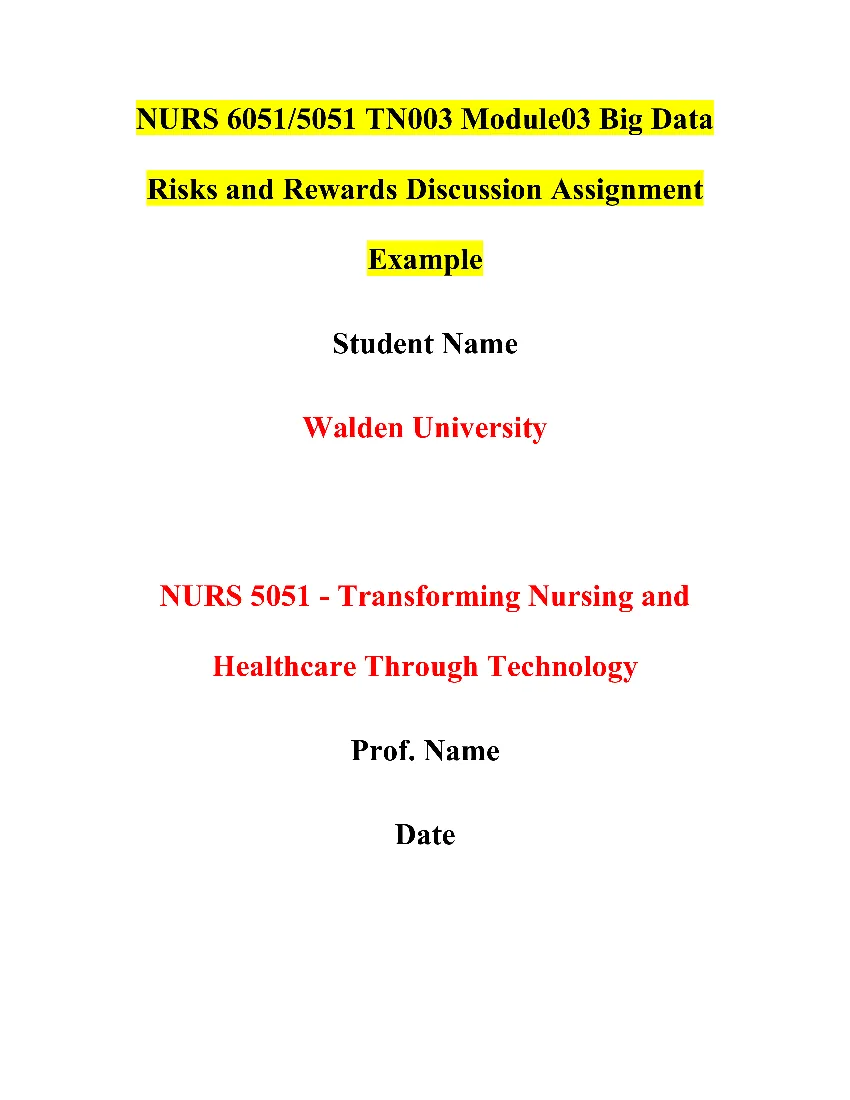 NURS 6051/5051 TN003 Module03 Big Data Risks and Rewards Discussion Assignment
NURS 6051/5051 TN003 Module03 Big Data Risks and Rewards Discussion Assignment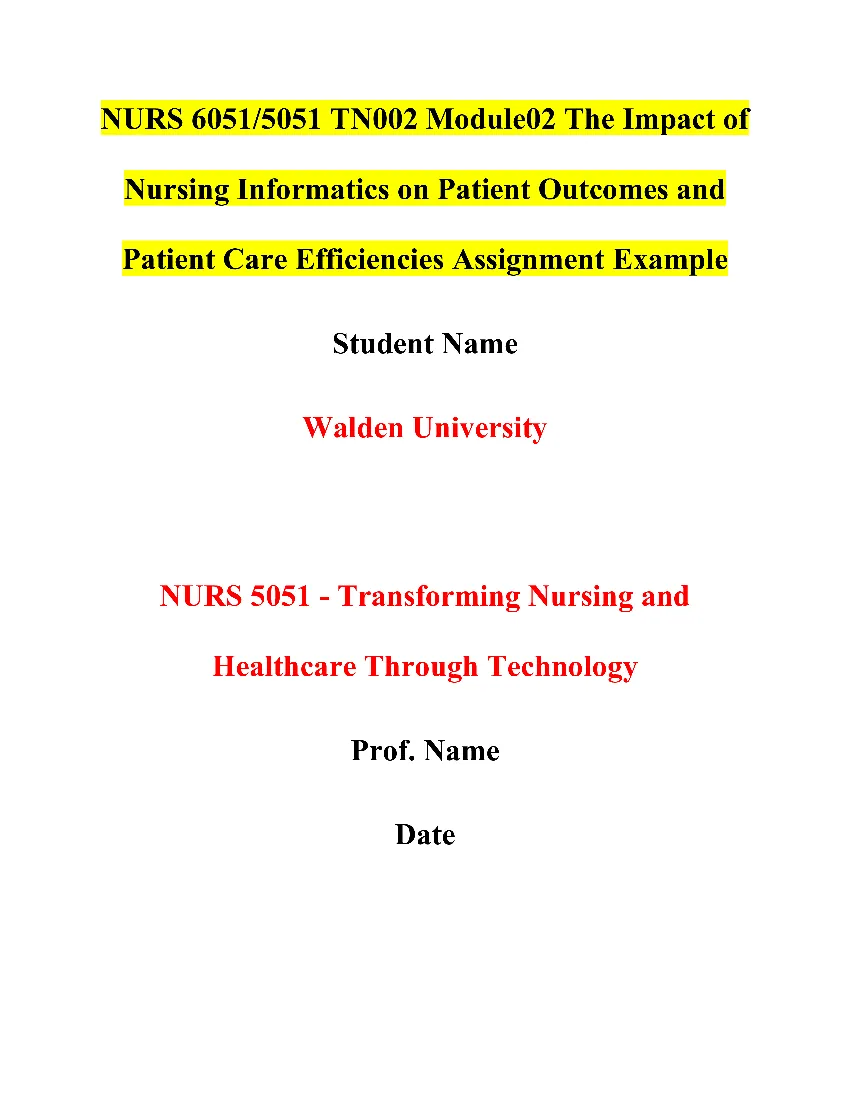 NURS 6051/5051 TN002 Module02 The Impact of Nursing Informatics on Patient Outcomes and Patient Care Efficiencies Assignment
NURS 6051/5051 TN002 Module02 The Impact of Nursing Informatics on Patient Outcomes and Patient Care Efficiencies Assignment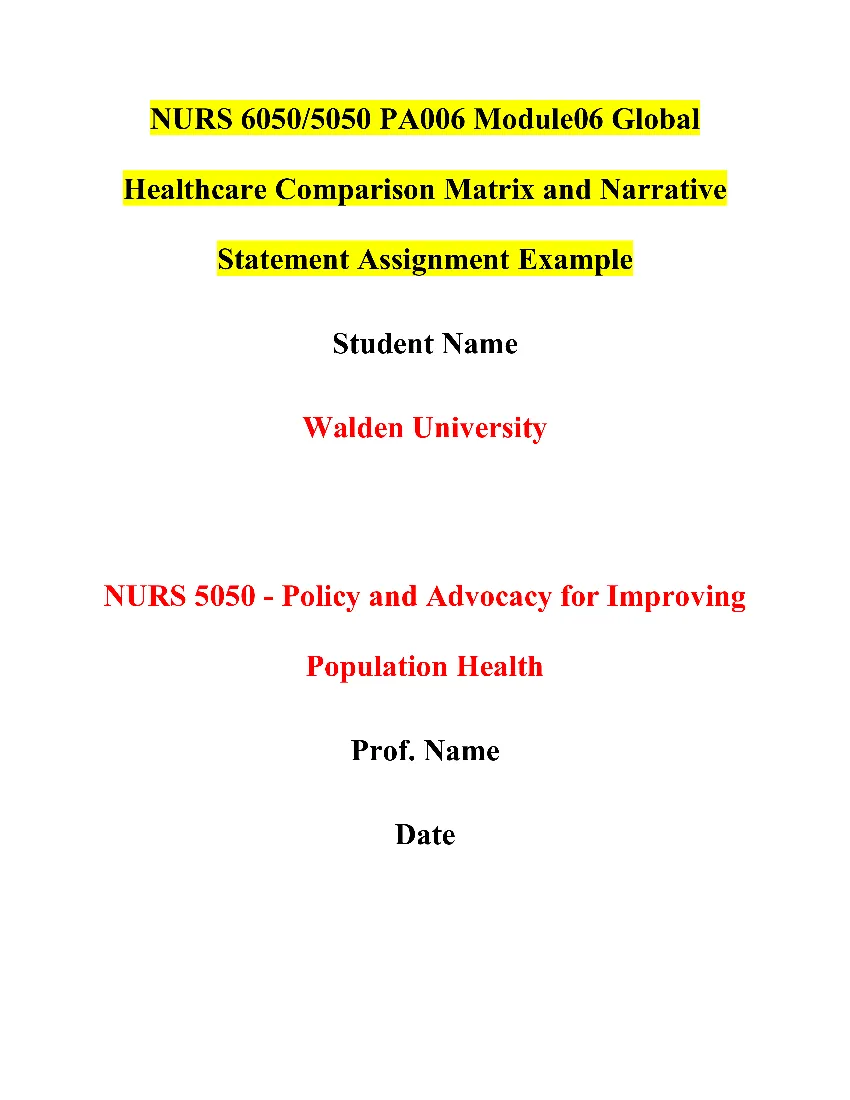 NURS 6050/5050 PA006 Module06 Global Healthcare Comparison Matrix and Narrative Statement Assignment
NURS 6050/5050 PA006 Module06 Global Healthcare Comparison Matrix and Narrative Statement Assignment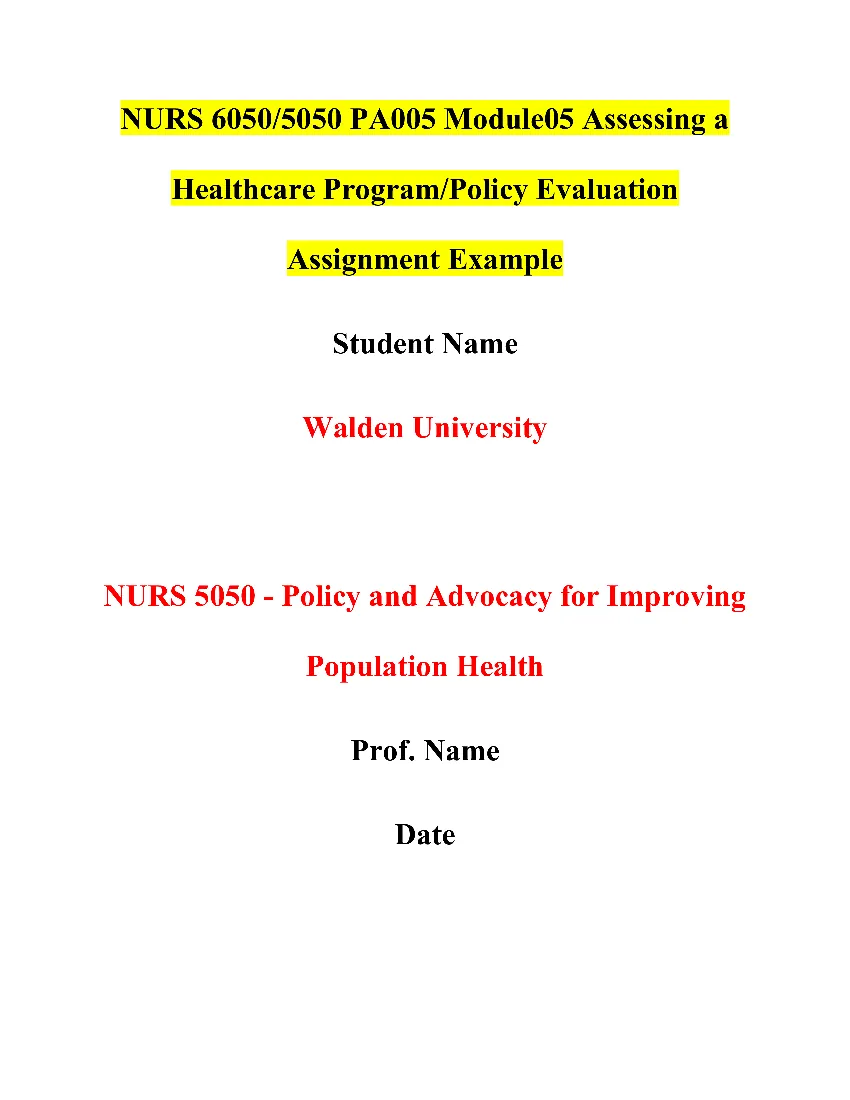 NURS 6050/5050 PA005 Module05 Assessing a Healthcare Program/Policy Evaluation Assignment
NURS 6050/5050 PA005 Module05 Assessing a Healthcare Program/Policy Evaluation Assignment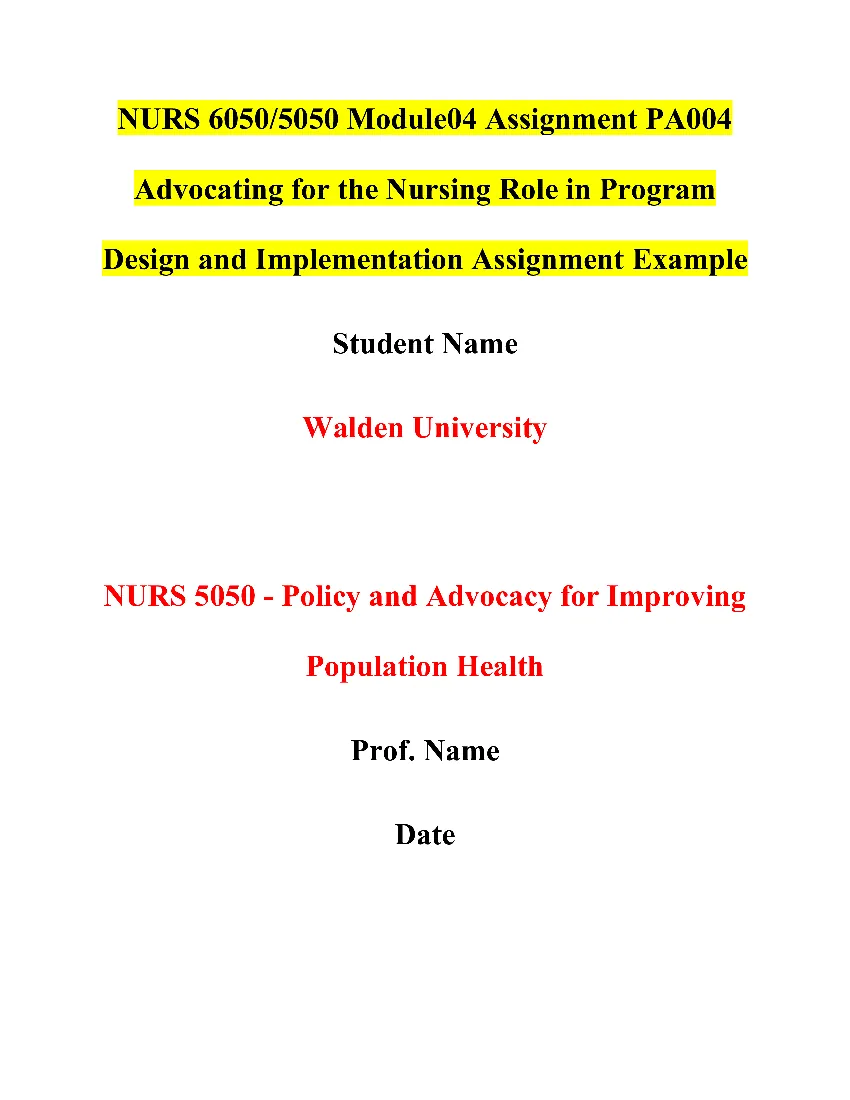 NURS 6050/5050 PA004 Module04 Advocating for the Nursing Role in Program Design and Implementation Assignment
NURS 6050/5050 PA004 Module04 Advocating for the Nursing Role in Program Design and Implementation Assignment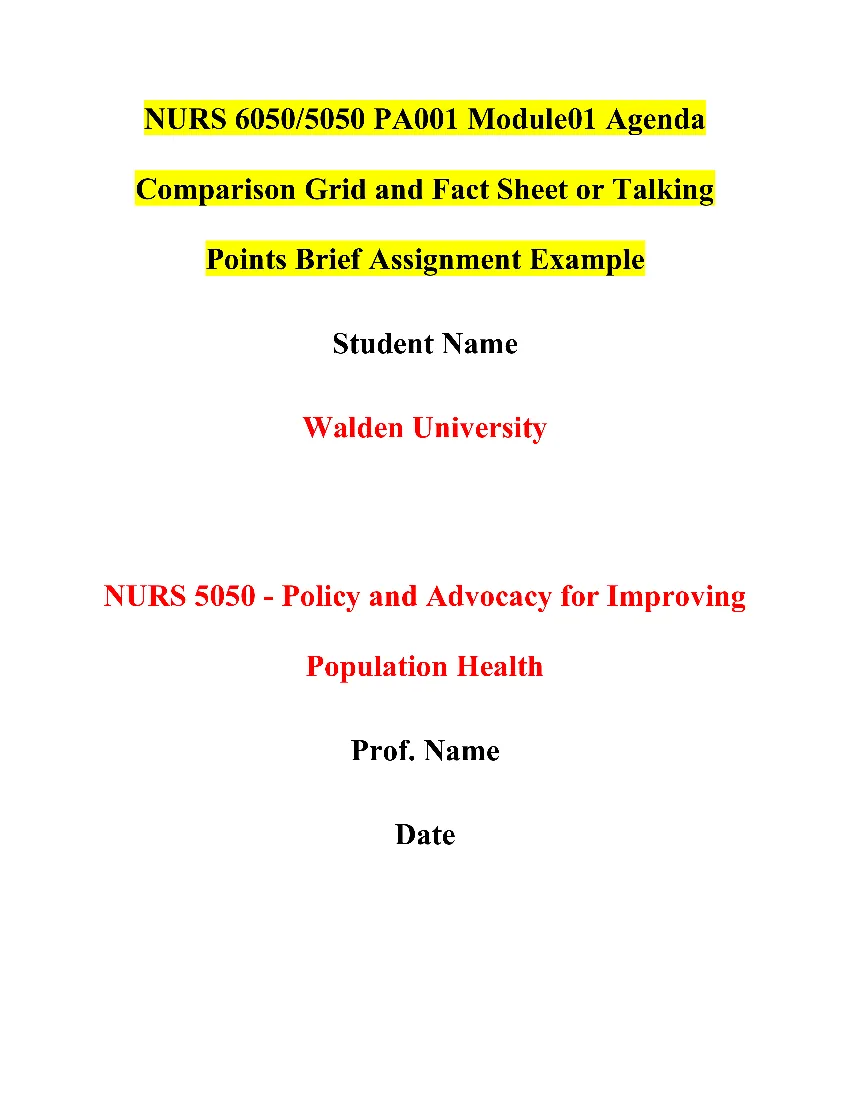 NURS 6050/5050 PA001 Module01 Agenda Comparison Grid and Fact Sheet or Talking Points Brief Assignment
NURS 6050/5050 PA001 Module01 Agenda Comparison Grid and Fact Sheet or Talking Points Brief Assignment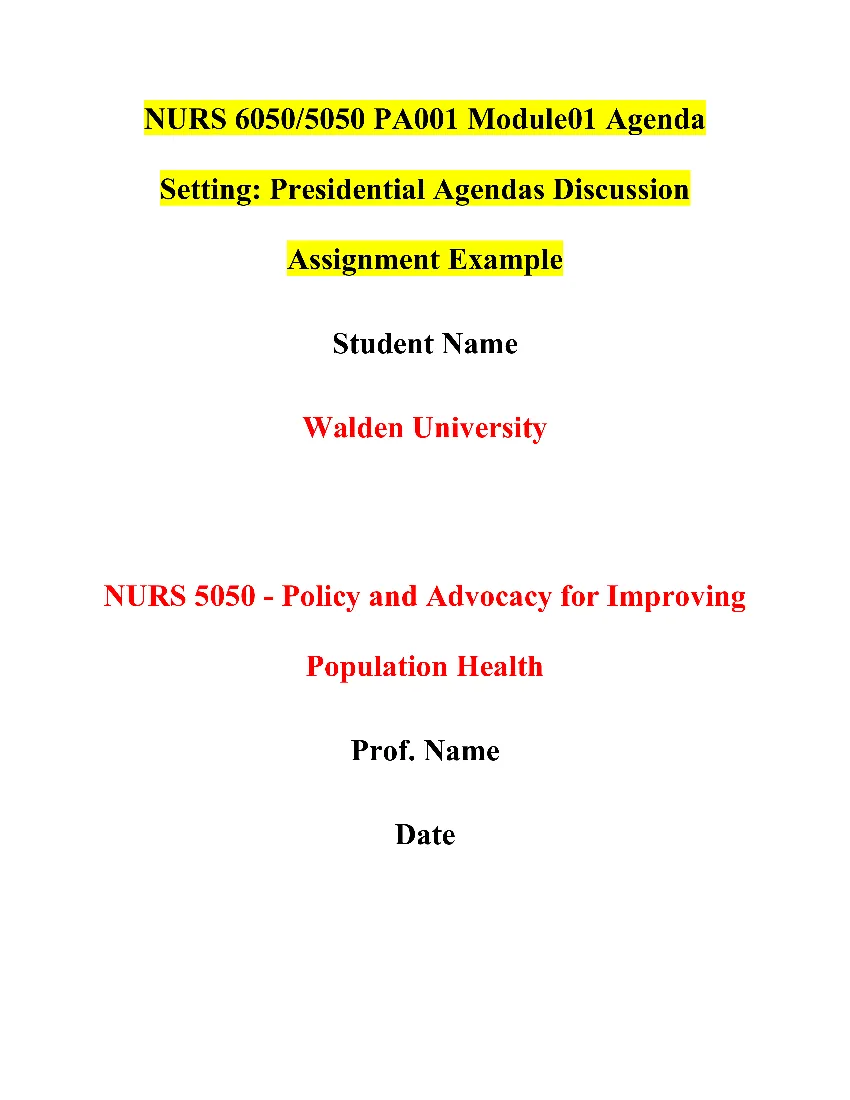 NURS 6050/5050 PA001 Module01 Agenda Setting: Presidential Agendas Discussion Assignment
NURS 6050/5050 PA001 Module01 Agenda Setting: Presidential Agendas Discussion Assignment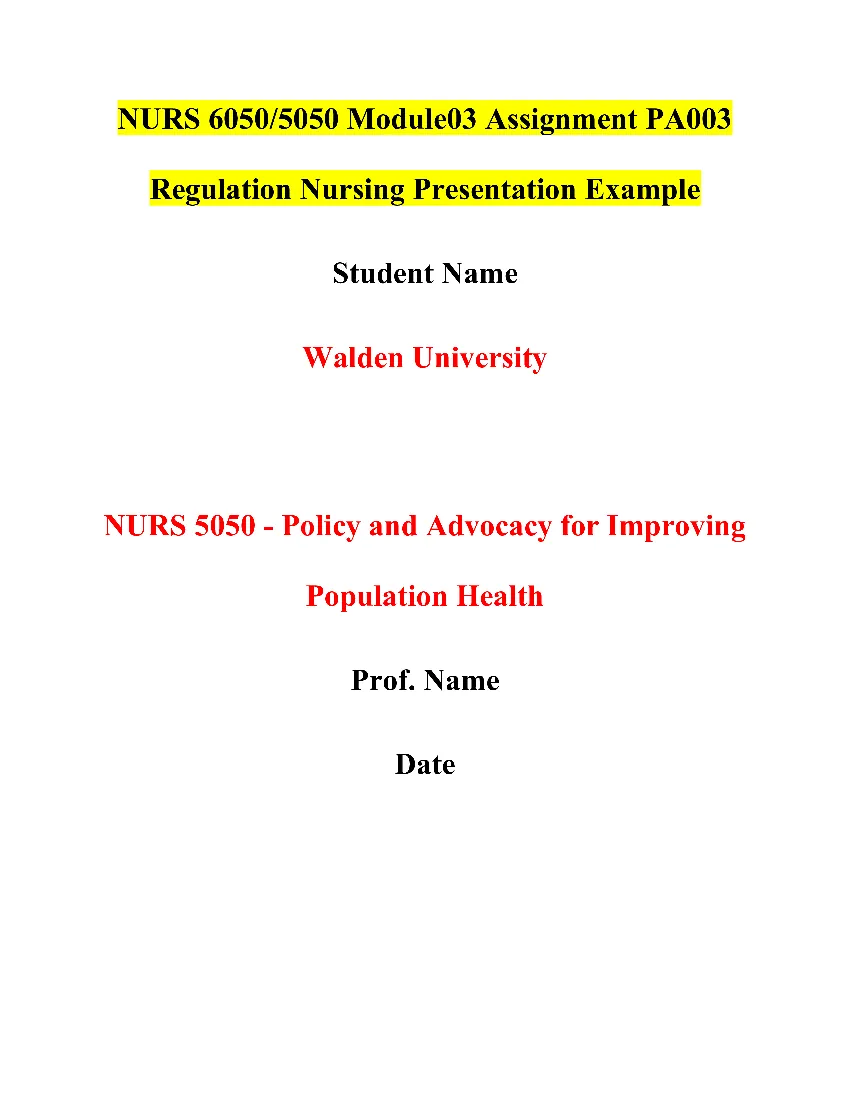 NURS 6050/5050 PA003 Module03 Regulation for Nursing Practice Staff Development Meeting Presentation Assignment
NURS 6050/5050 PA003 Module03 Regulation for Nursing Practice Staff Development Meeting Presentation Assignment